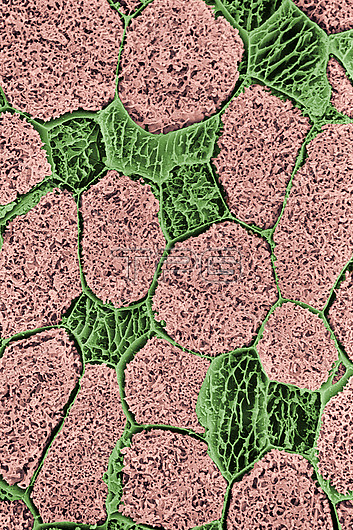
Scanning electron micrograph of a section of root nodule of a garden pea, Pisum sativum. Two cell types are visible, about 40 microns in size. The pink cells contain a network of membranes filled with bacteroids of Rhizobium leguminosarum. The green cells with cross walls act as a sponge that extends to the outer surface of the nodule, allowing air from the surrounding soil to reach the cells containing the bacteroids. The bacteroids, using a haem protein - leghaemoglobin - fix the atmospheric nitrogen to produce ammonium salts. This is an example of mutualism, or symbiosis. The bacterium gains a sequestered environment and products of photosynthesis from the plant, and the plant uses the fixed nitrogen for its growth. Globally, nitrogen fixation by micro-organisms produces about three times more "fertiliser" - 150-200m tonnes/yr - than the entire world chemical industry.
| px | px | dpi | = | cm | x | cm | = | MB |
Details
Creative#:
TOP27147835
Source:
達志影像
Authorization Type:
RM
Release Information:
須由TPG 完整授權
Model Release:
N/A
Property Release:
N/A
Right to Privacy:
No
Same folder images:

 Loading
Loading